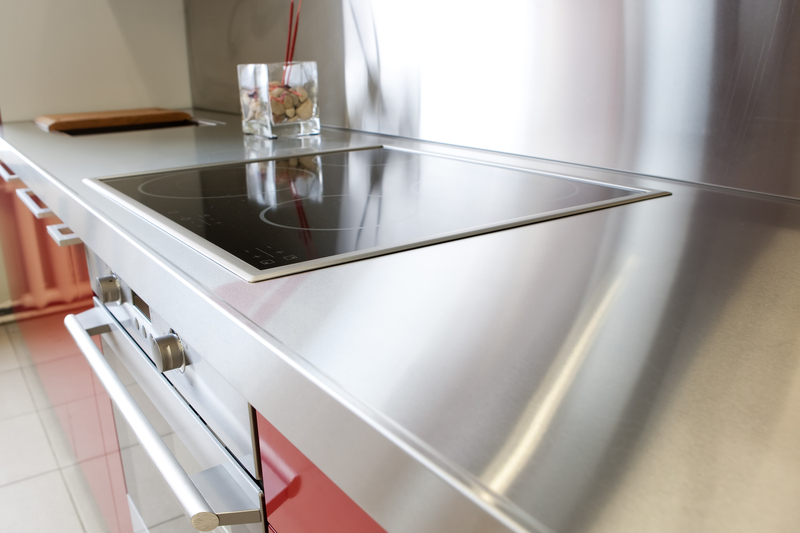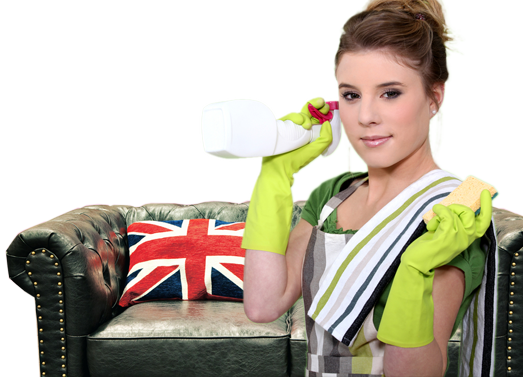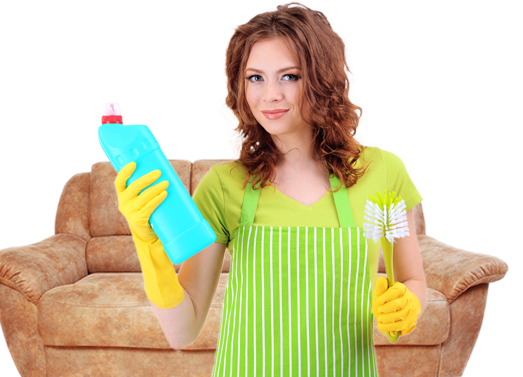Exploring the Impact of Air Quality on Home and Workplace Health
Posted on 12/09/2025
Exploring the Impact of Air Quality on Home and Workplace Health
Air quality is a crucial, yet often underestimated, factor in our day-to-day lives. Whether we are relaxing at home or working in a bustling office, the quality of the air we breathe significantly influences our health, productivity, and overall well-being. More than ever, awareness around pollutants, allergens, and clean air strategies is vital. This comprehensive article delves into the impact of air quality on domestic and workplace environments, explores causes, effects, and actionable solutions, and explains why investing in clean indoor air is more important than ever.
Understanding Indoor Air Quality (IAQ)
Indoor Air Quality (IAQ) refers to the condition of the air within and around buildings, especially in relation to the health and comfort of occupants. Recent studies have revealed that indoor air can be more polluted than outdoor air, due to a blend of sources and limited ventilation. Most people spend about 90% of their time indoors, making the examination of indoor air quality at home and the workplace crucial.
Key Pollutants Affecting Home and Workplace Air
Several invisible elements deteriorate air at home and workplaces. The following are among the most common:
- Volatile Organic Compounds (VOCs): Emitted from paints, cleaning products, air fresheners, and office equipment like printers and copiers.
- Mold and Mildew: Thrive in damp environments and release spores that are harmful when inhaled.
- Particulate Matter (PM2.5 and PM10): Tiny airborne particles from dust, smoke, and combustion processes that can penetrate deep into the lungs.
- Carbon Dioxide (CO2): High concentrations found in spaces with inadequate ventilation can cause drowsiness and loss of concentration.
- Radon: An odorless radioactive gas from the natural breakdown of soil minerals that can accumulate indoors, increasing cancer risk.
- Allergens: Pollen, pet dander, and dust mites contribute to allergic reactions and respiratory distress.

How Poor Air Quality Impacts Health at Home
Poor indoor air quality in homes is linked to a wide spectrum of negative health effects, especially for vulnerable populations like children, the elderly, and those with preexisting conditions. Understanding the consequences is the first step in addressing them proactively.
Short-Term Health Effects
- Headaches and fatigue
- Irritation of eyes, nose, and throat
- Allergic reactions such as sneezing, coughing, or skin rashes
- Asthma attacks or worsening of existing respiratory symptoms
- Dizziness and reduced concentration
Long-Term Health Consequences
- Chronic respiratory diseases such as asthma, bronchitis, and COPD
- Developmental effects in children, including impaired lung growth
- Heightened risk of heart disease and hypertension
- Increased risk of lung cancer, especially from exposure to radon and VOCs
- Exacerbation of autoimmune and neurological disorders
Maintaining healthy air quality is therefore not just about comfort--it's about safeguarding the well-being of every household member.
air Quality and Its Impact in Workplace Environments
Productive and healthy workplaces rely on optimal air quality. Offices, factories, shops, and other workplaces can expose employees to unique pollutants, often in confined settings. As a result, workplace air quality should be a priority for employers and facility managers alike.
Common Workplace Air Contaminants
- Airborne chemicals from cleaning agents, solvents, paints, adhesives, and office machines
- Biological contaminants such as bacteria, viruses, and molds, especially from HVAC systems
- Dust and particulates from manufacturing operations or construction projects
- Ozone from printers and copiers
- Combustion byproducts from machinery, kitchens, or attached garages
Health and Productivity Impacts
Just as at home, air quality issues at work cause a range of problems, including:
- An increase in sick days and absenteeism
- Reduced cognitive performance, decision-making, and creativity
- Higher incidence of headaches and fatigue during working hours
- Exacerbation of existing health problems and allergies
- Potential liability issues for employers due to occupational exposure
Improving indoor air quality at workplaces enhances not only employee health but also job satisfaction, motivation, and organizational performance.
Factors That Influence Indoor Air Quality
Many factors contribute to the quality of air inside buildings. Understanding these allows for more targeted interventions:
- Ventilation: Inadequate ventilation fails to remove pollutants effectively, leading to stagnation.
- Building Materials: Newer materials may off-gas chemicals, while older buildings can harbor asbestos or lead dust.
- Occupant Activities: Cooking, cleaning, or hobby activities may introduce allergens or VOCs.
- Outdoor Air Quality: Pollution and pollen can enter from outside, especially in urban areas or near busy roads.
- Climate: Warm, humid climates favor mold growth, while cold climates may limit ventilation as windows remain closed.
The Role of HVAC Systems
Heating, Ventilation, and Air Conditioning (HVAC) systems are essential for maintaining comfortable temperatures, but can also spread or reduce pollutants. Dirty filters and poor maintenance may exacerbate problems, whereas modern, well-kept systems with quality filtration can drastically improve air quality indoors.
Ways to Improve Air Quality at Home and Work
Mitigating the impact of poor air quality is essential for promoting health. Here are practical, proven methods employers and homeowners can adopt:
1. Enhance Ventilation
- Open windows and doors regularly to allow fresh air to circulate
- Use exhaust fans in bathrooms, kitchens, and laundry areas
- Consider mechanical ventilation systems in airtight buildings
2. Use Air Purifiers and Filters
- Install HEPA filters in HVAC systems to trap fine particulates
- Deploy portable air purifiers in bedrooms and office spaces
- Change filters regularly according to manufacturer recommendations
3. Manage Moisture and Prevent Mold
- Address leaks and water damage immediately
- Use dehumidifiers in damp basements or bathrooms
- Clean and dry areas prone to moisture within 24-48 hours
4. Limit Use of Harmful Chemicals
- Choose low-VOC or VOC-free paints, adhesives, and cleaning supplies
- Store chemicals and solvents outside living and working areas
- Use natural cleaning alternatives where possible
5. Control Allergens
- Vacuum with HEPA filters and wet mop floors regularly
- Wash bedding and curtains frequently in hot water
- Groom pets and restrict their access to bedrooms
6. Monitor Indoor Air Quality
- Install air quality monitors to detect pollutants and adjust strategies accordingly
- Test for radon, particularly in basements and crawl spaces
- Set up carbon monoxide detectors in key areas
The Economic Impact of Clean Air in Homes and Offices
The benefits of investing in better air quality extend far beyond health:
- Increased property value: Homes with evidence of good air quality and ventilation are more attractive to buyers.
- Reduced healthcare costs: Fewer illnesses mean lower medical expenses for individuals and organizations.
- Lower absenteeism: Employees take fewer sick days when workplace air is clean.
- Improved productivity: Studies show clearer thinking, faster decision-making, and less fatigue in workers exposed to healthy air.
- Enhanced brand reputation: Demonstrating a commitment to employee or resident well-being builds goodwill and loyalty.
Regulations and Standards for Indoor Air Quality
Governments and industry groups have established air quality guidelines to safeguard public health:
- EPA Indoor Air Quality Program: Recommends limits for common pollutants (United States)
- OSHA Standards: Enforces air contaminant exposure limits in workplaces (United States)
- ASHRAE Standards: Widely adopted HVAC and ventilation benchmarks (International)
- WHO Guidelines: Global maximum exposure levels for pollutants like PM2.5, ozone, and formaldehyde
Compliance with these standards ensures safer environments at work and in the home; however, voluntary actions often exceed legal requirements and result in even greater benefits.

Emerging Technologies for Air Quality Monitoring and Purification
Recent technological advancements are making it easier and more affordable to manage and monitor indoor air:
- Smart Air Quality Monitors: Monitor VOCs, CO2, PM, and humidity in real-time and connect to smartphones for alerts and reports
- AI-driven HVAC Controls: Adjust airflow, filtration, and temperature automatically for maximum comfort and cleanliness
- Advanced Filtration: Technologies like electrostatic precipitators, UV-C sterilization, and activated carbon filters target specific contaminants
- Green Building Design: Passive ventilation, biophilic design, and sustainable materials reduce reliance on artificial purification and limit source emissions
Conclusion: Breathing Easy Starts at Home and at Work
Indoor air quality is an essential but often overlooked determinant of both home health and workplace well-being. With a growing body of evidence linking poor air quality to a wide range of health issues, now is the time to take action. By understanding common sources of pollution, recognizing health risks, and employing proven strategies for cleaner air, families and organizations can create safer, more comfortable, and more productive interiors.
Good air quality isn't just a luxury--it's a necessity. Whether through improved ventilation, regular pollutant monitoring, or new purification technologies, every investment in cleaner air is an investment in the future health and happiness of everyone under your roof--at home or at the office.
Take the first step: Assess your indoor air today, implement simple changes, and explore modern solutions. Fresh, healthy air is the foundation for a better life!





